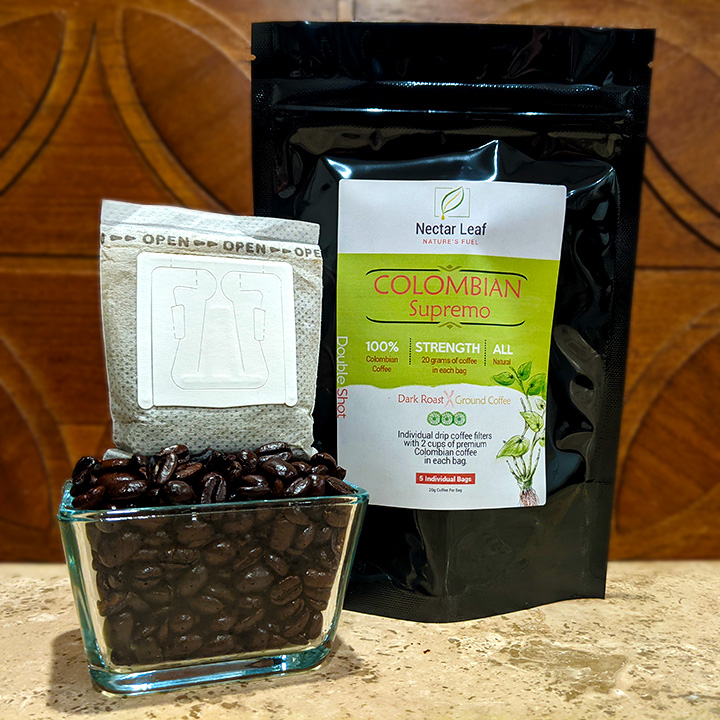What makes coffee from various regions distinct?
Coffee beans from different regions around the world can have distinct flavors and characteristics due to various factors, including climate, soil, altitude, and processing methods. Here are some of the key differences you might find in coffee beans from different regions:
Flavor Profile
Latin America (e.g., Colombia, Brazil): Coffees from this region often have a well-balanced flavor profile with mild acidity. Colombian coffee is known for its brightness and nutty notes, while Brazilian coffee tends to be smoother with chocolate and nut flavors.
Africa (e.g., Ethiopia, Kenya): African coffees are known for their bright acidity and unique fruity, floral, and wine-like flavors. Ethiopian coffee, in particular, is renowned for its complex, tea-like qualities, while Kenyan coffee often has a bold, fruity acidity.
Asia (e.g., Sumatra, Java, Vietnam): Coffees from this region can vary widely. Sumatran coffees are famous for their full body and earthy, spicy flavors, while coffees from Java might be more mellow. Vietnamese coffee is often used for robusta beans and is known for its strong, bitter character.
Altitude
Higher altitude coffee (e.g., from the Andes in South America or the mountains of East Africa) often produces beans with more pronounced acidity and a greater complexity of flavors. These coffees are typically considered to be of higher quality.
Processing Methods
Different regions often use distinct processing methods, such as natural (dry) or washed (wet) processes. These methods can influence the flavor and aroma of the beans. For example, dry-processed Ethiopian coffees have a characteristic fruity sweetness, while washed Central American coffees are known for their clean, bright acidity.
Terroir
Just like with wine, the concept of terroir applies to coffee. The specific soil composition, climate, and geography of a region can have a significant impact on the flavor of the coffee beans. Each region’s unique terroir contributes to the overall taste profile.
Bean Varieties
Different coffee varieties, such as Arabica and Robusta, thrive in various regions. Arabica beans are generally known for their milder, nuanced flavors and are more prevalent in Latin America and East Africa. Robusta beans have a stronger, bitter taste and are often found in Southeast Asia.
Climate and Seasonal Variability
The climate and seasonal variations in different regions can affect coffee quality. Inconsistent weather patterns, temperature changes, and rainfall levels can lead to annual variations in coffee flavor and crop yield.
Processing Techniques
The way coffee beans are processed and dried after harvesting can also impact flavor. Some regions have unique processing techniques, such as sun-drying, that affect the final taste of the coffee.
It’s important to note that these generalizations may not hold true for every coffee from a particular region, as factors such as farm practices and individual microclimates can lead to variations. Exploring coffee from different regions is a great way to appreciate the diversity and complexity of the coffee world.

Colombian Coffee
Colombian coffee is distinct from other coffees in several ways, and its unique characteristics have made it one of the most recognized and beloved coffee origins in the world. Here are some key features that set Colombian coffee apart:
- Bright Acidity: Colombian coffee is known for its bright and lively acidity. This acidity gives it a crisp and refreshing quality that makes it stand out in the world of coffee. It’s often described as citrusy, with hints of apple or pear-like acidity. This brightness is a defining feature of Colombian coffee and is a result of the country’s diverse microclimates.
- Medium Body: Colombian coffee typically has a medium body, which means it’s not overly heavy or light. This balance in body complements its acidity and allows for a well-rounded and smooth drinking experience.
- Well-Balanced Flavor Profile: Colombian coffee is prized for its well-balanced flavor profile. You’ll find a harmonious combination of flavors, including mild citrus notes, caramel-like sweetness, and nutty undertones. This balance is one of the reasons Colombian coffee is so popular among coffee lovers.
- Diverse Growing Regions: Colombia boasts a range of coffee-producing regions, each with its own microclimate and terroir. These regions, such as Huila, Antioquia, and Tolima, contribute to the diversity of Colombian coffee. Different regions can offer distinct flavor nuances, adding to the overall appeal of Colombian coffee.
- High-Quality Arabica Beans: Colombia primarily cultivates Arabica coffee beans, which are celebrated for their smooth, nuanced, and flavorful characteristics. This focus on Arabica beans contributes to the quality and consistency of Colombian coffee.
- Strict Quality Control: Colombia has a well-established coffee production and export system that emphasizes quality control. Coffee from Colombia is often associated with rigorous quality standards and certifications, ensuring that the beans meet certain criteria for taste and consistency.
- Sustainable Practices: Colombian coffee growers have increasingly adopted sustainable and environmentally friendly farming practices. Many Colombian coffee farms are Rainforest Alliance Certified or adhere to organic farming methods, contributing to the sustainability of the coffee industry.
- Rich Coffee Culture: Colombia has a deep coffee culture that is celebrated and embraced by its people. Coffee is not just a beverage but a way of life in Colombia. The coffee culture includes traditional coffee rituals and celebrations, making the coffee experience unique and rich in tradition.
- Versatility: Colombian coffee is versatile and can be enjoyed in various brewing methods, from espresso to pour-over to French press. Its well-balanced flavor and acidity make it a popular choice for both single-origin and blended coffee.

